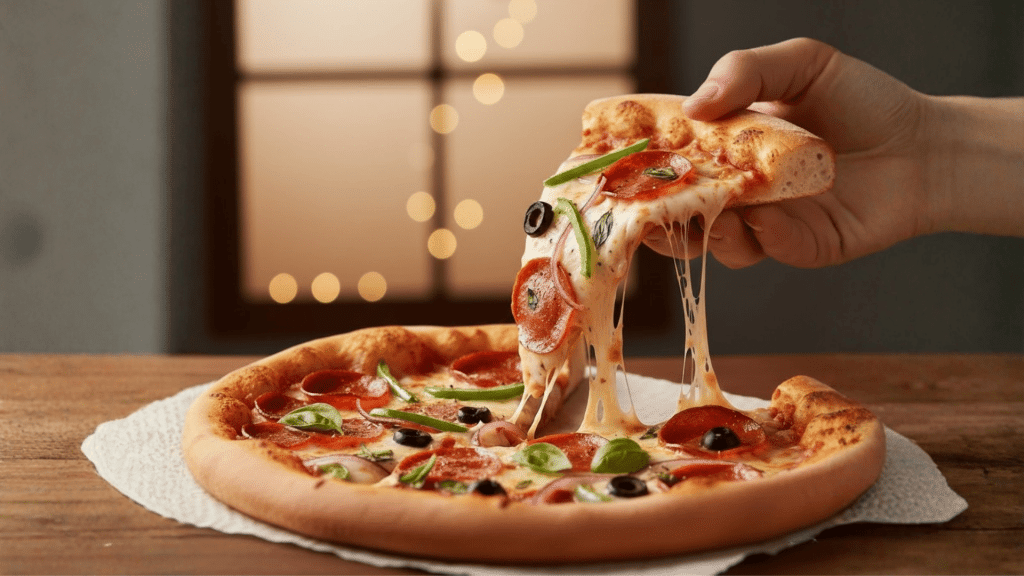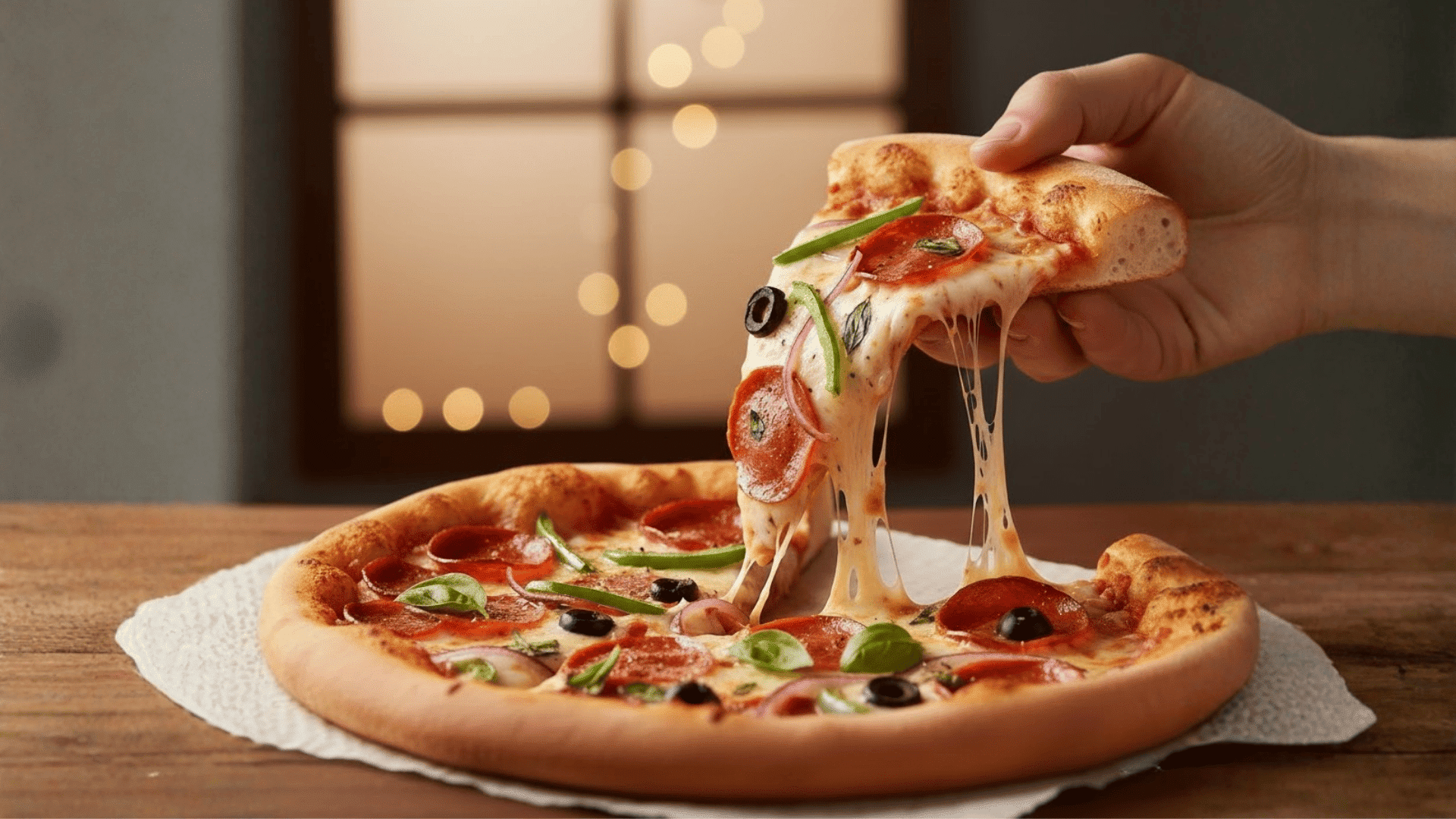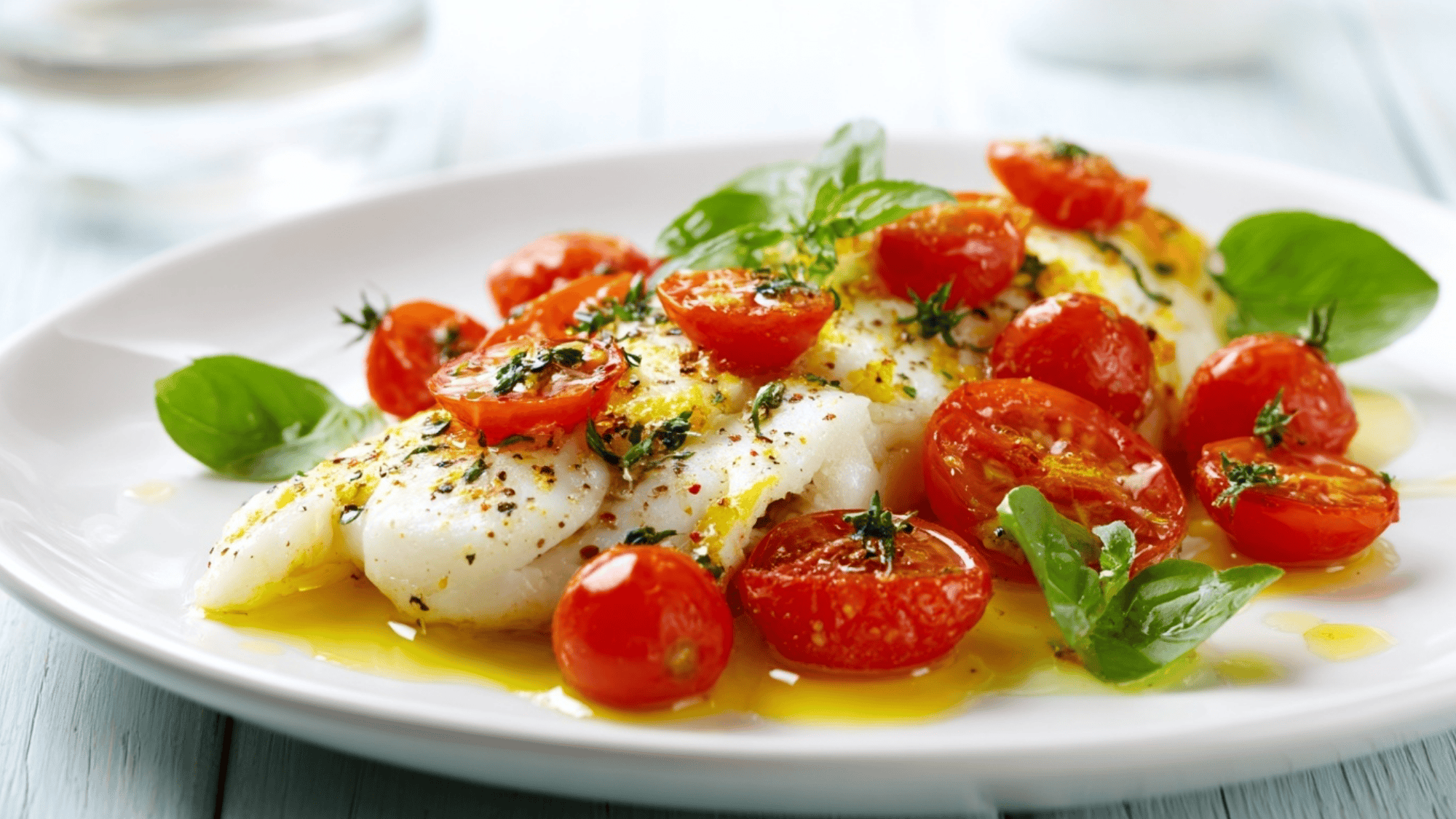Pizza is one of the most popular foods around the world, but many people wonder how many calories are in one slice of pizza before they take that first bite. The answer isn’t as simple as you might think.
The calorie count depends on several factors, including crust thickness, toppings, and slice size. Some slices are surprisingly light, while others pack a serious caloric punch.
Understanding what goes into your pizza can help you make better choices without giving up your favorite food. Keep reading to learn what you need to know about pizza calories and how to enjoy it as part of a healthy diet.
How Many Calories Are in One Slice of Pizza?
A typical slice of pizza contains between 200 and 300 calories, but the exact number depends on several factors. The size of the slice, type of crust, and toppings all play a role in the final calorie count.
A thin-crust slice with minimal cheese will have fewer calories than a thick-crust slice loaded with extra toppings.
Plain cheese pizza has 200-285 calories per slice, pepperoni ranges from 280-350, veggie pizza falls between 215-290, and meat-lovers pizza contains 300-400 calories per slice.
Keep in mind that these are estimates for medium-sized slices from a standard 14-inch pizza.
Calories in a Slice of Cheese Pizza: What to Expect

A plain cheese pizza slice typically ranges from 200 to 285 calories. The calorie count varies by brand and preparation style.
Domino’s cheese pizza has about 200 calories per slice, while Papa John’s has about 210 calories per slice. Pizza Hut’s hand-tossed cheese slice has approximately 240 calories.
The difference comes from crust thickness, the amount of cheese used, and the type of sauce. Hand-tossed and pan pizzas generally have more calories than thin-crust options.
Extra cheese or a butter-brushed crust will also increase the total calories in your slice.
How Toppings Impact the Calories in a Single Slice of Pizza
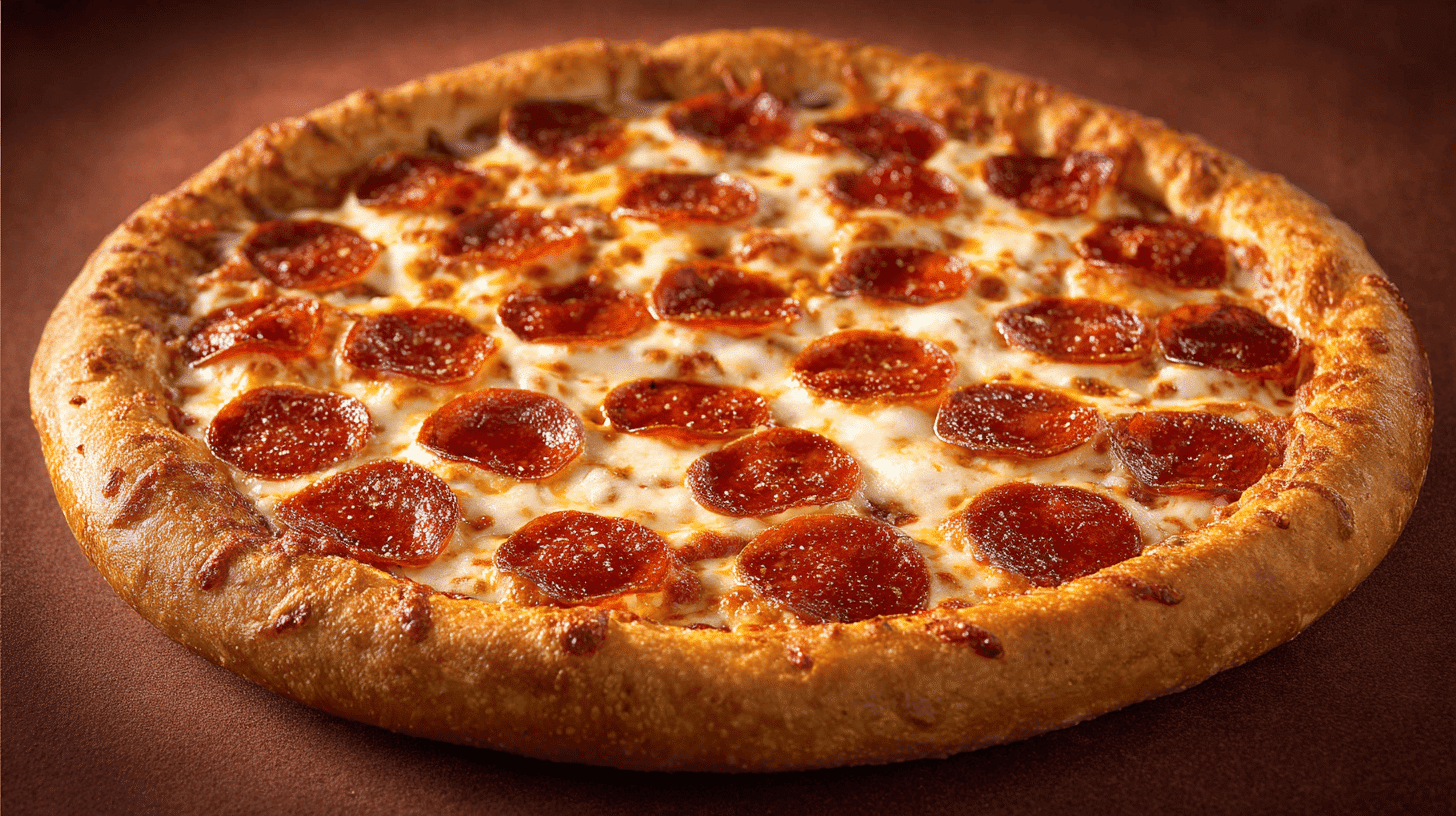
The toppings you choose can make a big difference in your pizza’s calorie count. While a plain cheese slice might have around 200 calories, adding various toppings can push that number much higher.
1. Meats Like Pepperoni, Sausage, and Extra Cheese Add More Calories
Meat toppings are some of the biggest calorie contributors on pizza. Pepperoni adds about 50 to 80 extra calories per slice compared to plain cheese pizza.
Sausage can add 60 to 90 calories, while bacon adds 40 to 60. Extra cheese adds approximately 50 to 70 calories per slice, making meat-loaded pizzas reach 350 to 400 calories.
2. Veggie Toppings Are Usually Lower in Calories
Vegetable toppings are a much lighter option for pizza lovers watching their calorie intake. Mushrooms, bell peppers, onions, and tomatoes add only 5-15 calories per slice.
Even when you load up a pizza with multiple veggie toppings, the calorie increase remains minimal. A veggie pizza might only have 20 to 30 more calories than plain cheese.
3. Comparing Popular Toppings: Pepperoni vs. Mushrooms
The calorie difference between meat and veggie toppings becomes clear when you compare pepperoni to mushrooms.
A slice with pepperoni contains roughly 280 to 300 calories, while a slice with mushrooms has only 210 to 220 calories. That’s a difference of 70 to 80 calories per slice, which adds up quickly when you have multiple slices.
How Many Carbs Are in a Slice of Pizza?
A typical slice of pizza contains 30 to 40 grams of carbohydrates, though this varies based on crust type.
Thin-crust pizzas have fewer carbs, usually around 20 to 25 grams per slice, while thick or pan-crust pizzas can contain 35 to 45 grams. The crust is the main source of carbs in pizza, as it’s made from flour.
For people following low-carb or keto diets, pizza can be challenging since carbs contribute significantly to the total calorie count.
Each gram of carbohydrates contains four calories, meaning the crust alone accounts for a large portion of the pizza’s overall calorie content.
Nutritional Facts of a Slice of Pizza: Beyond Calories
Pizza offers more than just calories. Each slice contains a mix of nutrients, including protein, fat, vitamins, and minerals. Understanding the complete nutritional profile helps you see how pizza fits into your daily diet.
| NUTRIENT | AVERAGE VALUES (Per Slice) |
|---|---|
| Calories | 200 – 285 (varies by crust & toppings) |
| Total Fat | 8 – 12 g |
| Saturated Fat | 3 – 5 g |
| Protein | 10 – 16 g |
| Sodium | 400 – 700 mg |
| Cholesterol | 15 – 30 mg |
| Vitamins & Minerals | Good source of calcium (~20%), iron (~10%), vitamin A (~15%) |
While pizza does contain saturated fat and sodium, it also provides valuable nutrients like protein and calcium. Choosing your toppings carefully and watching portion sizes can help you enjoy pizza as part of a balanced meal.
Does Pizza’s Calorie Count Vary by Slice Size and Thickness?
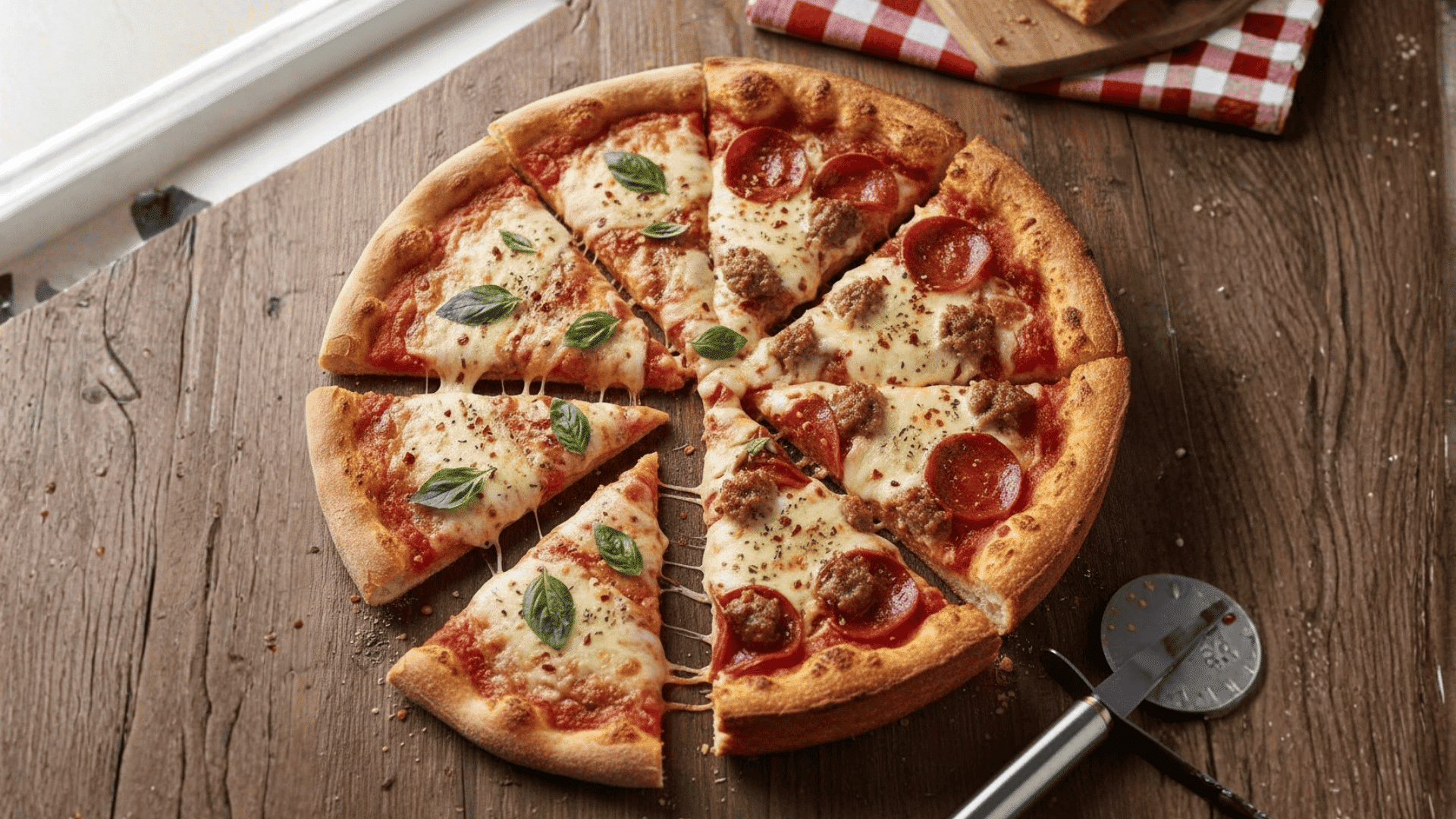
Slice size and crust thickness have a major impact on a pizza’s calorie content. A standard slice from a 14-inch pizza contains 200 to 300 calories, but slices from larger pizzas can have significantly more.
An extra-large 18-inch pizza slice may contain 300 to 400 calories due to its bigger size.
Deep-dish and thick-crust pizzas pack even more calories, often reaching 350 to 450 calories per slice because of the extra dough and toppings.
Thin-crust pizzas are the lightest option, with slices ranging from 150 to 250 calories. The difference between a thin-crust slice and a deep-dish slice can be over 200 calories, making crust choice an important factor.
How Many Calories Do You Really Need in a Meal?
Most adults need between 1,800 and 2,400 calories per day, depending on age, gender, and activity level. A typical meal should contain about 500 to 700 calories to stay within healthy limits.
One or two slices of pizza can fit comfortably into a balanced diet when paired with a side salad or vegetables.
The key is portion control and choosing wisely. Opting for thin crust, adding veggie toppings, and limiting high-calorie meats helps keep your meal reasonable.
Pizza doesn’t have to be off-limits when you’re watching calories. You can enjoy it as part of a healthy eating plan by being mindful of serving sizes and balancing it with nutritious sides.
The Best Pizza Choices for a Lower-Calorie Slice
If you want to enjoy pizza while keeping calories in check, making smart choices can make a big difference. Small changes to your order can save you hundreds of calories without sacrificing flavor.
- Pick Thin Crust: Choose thin crust instead of thick or deep-dish to reduce calories and carbs.
- Go Light on Cheese: Use less cheese or ask for light cheese to lower fat and calories.
- Add More Veggies: Load up on mushrooms, peppers, onions, or other veggies for flavor with fewer calories.
- Watch Your Meat Toppings: Avoid high-calorie meats like sausage or bacon, or opt for leaner options like grilled chicken.
- Choose Healthier Chains: Try pizza from places known for lighter options, such as those offering whole-grain crusts and fresh veggies.
These simple swaps help you enjoy pizza guilt-free while staying within your calorie goals. You don’t have to give up pizza completely to eat healthier. With the right choices, pizza can be part of a nutritious diet.
Summing It Up
Now you know how many calories are in one slice of pizza and what factors affect that number. From crust type to toppings, every choice you make impacts the final calorie count.
The good news is that pizza can fit into a balanced diet when you’re mindful about portions and ingredients.
Thin-crust pizzas with veggie toppings keep calories low, while deep-dish meat-lovers’ pizzas sit on the higher end. You don’t have to avoid pizza completely to stay healthy.
What’s your favorite way to enjoy pizza while keeping it light? Share your tips and tricks in the comments below!
Frequently Asked Questions (FAQs)
Does Reheating Pizza Change Its Calorie Count?
No, reheating doesn’t change calories – only the temperature.
Is Frozen Pizza Higher in Calories than Fresh Pizza?
Often yes, because frozen pizzas typically contain more cheese, sodium, and preservatives.
Are Gluten-Free Pizzas Lower in Calories?
Not necessarily – many gluten-free crusts use higher-calorie starches.
Does Pizza without Cheese Significantly Reduce Calories?
Yes, skipping cheese can cut roughly 60-100 calories per slice.


